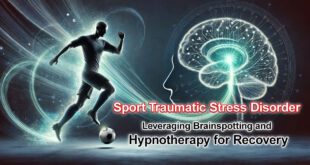Our brain is the organ that controls our body. But consciousness is what drives our brain and gives each of us life. It is what makes us unique to the universe. Between consciousness and death, there are varying “sub” levels of consciousness. Sleep is a level of subconsciousness. Daydreaming, meditation and mindfulness are sub-levels of consciousness. If you are not wide awake and not dead, you are operating at a subconscious level that occurs naturally and often to each of us every day.
When we are consciously alert, we exert our willpower over our environment and we think with reason with logic. But when we operate below that level, we think in terms of imagination and feeling. Our subconscious allows us to exist in our version of the world without having to filter out information to decide if it is true. It simply takes it all in like a recorder and assumes that it is. It is autonomous and self-determined. That internal dialogue is what fuels our existence.
Our subconscious learns through association and does not distinguish between reality and fantasy. It scoops up information from our environment and makes assumptions based on associations, and determines our reality based on those assumptions. If I have a loving mother, I will perceive motherhood as a loving relationship. But if I have an abusive mother, then my representation of motherhood will be negative. We assume that even though we cannot feel the bottom of our feet, that our feet will carry our legs forward as soon as we desire it. We assume that if we go to sleep that we will wake up the next day. These unconscious thoughts and behaviors are manipulated and organized at a subconscious level.
Consciously we are totally unaware of what is happening subconsciously, but every day our subconscious allows us to navigate through our version of the world without giving it any conscious thought. Can you imagine how little time it would take to go insane if you had to tell your body to move one foot and now the other? Now move your leg forward. Now blink. Now feel love towards your mother. Notice every single car that passes by? Hear every bird that chirps? It would take hours to cross the room and by the time you arrived, you would be exhausted and certifiably mad. Our subconscious does all of this for us so that we are safe from harm, mentally, physically and emotionally in our internal version of the world.
So it is no wonder that our subconscious makes up 88 to 90% of our “MIND POWER.” It has to manage a lot. While our consciousness has the luxury of taking a timeout, our subconscious never can. Our subconscious is consuming massive amounts of data. More than the human mind is capable of understanding. Important information is dissected and compartmentalized in areas of our memory to be recalled should we need it and the rest is vented out each night when we dream.
With this understanding, it is easy to comprehend how “environmental misinterpretation” or “relationship mishaps” can create subconscious “thinking” errors. Given that associations are formed one on top of the other, a breach in the chain will corrupt the entire thought strand. If our 10% conscious willpower collides with that stand in the 90% of mind power that controls our subconscious motivation, that corrupted strand will squash willpower and reason like a bug. It is exactly why we can habituate behavior that makes no sense. It is because at some point it was introduced into the association process as being a comfortable truth on an emotional level and assimilated into the behavior.
Interestingly enough, it is not always necessary to retrieve the corrupted strand to replace it. Suggestive therapies, (hypnosis, NLP EFT), override the corrupted association chain with a healthier one that supports the desired outcome. Using various techniques, it is done using the same imagination and feelings that corrupted the original process and replaces the negative one with one for a more desired productive outcome. Depending upon the condition, recovery can be quick and painless.
 Hypnozine | Hypnosis Magazine Articles by Hypnotherapists Worldwide
Hypnozine | Hypnosis Magazine Articles by Hypnotherapists Worldwide




